Affiliate Disclosure: In the interest of full transparency, please be aware that some links in this post are affiliate links. This means that if you click on these links and make a purchase, we may earn a small commission at no additional cost to you. These commissions help support our ability to provide you with free travel tips and advice. We genuinely appreciate your support and thank you for using our affiliate links.
What's in this Post
Introduction to Cusco and Machu Picchu
Cusco, once the capital of the Inca Empire, is a city steeped in history and surrounded by breathtaking landscapes. Nestled in the Andes Mountains at an elevation of 11,150 feet (3,400 meters), Cusco is a gateway to the Sacred Valley and the iconic Machu Picchu. The region’s geography is a mix of rugged mountains, fertile valleys, and winding rivers, making it a paradise for nature lovers and history buffs alike.
Machu Picchu, the “Lost City of the Incas,” is one of the most famous archaeological sites in the world. Built in the 15th century and hidden from the Spanish conquistadors, this ancient citadel was rediscovered in 1911 by Hiram Bingham. Its precise stone construction, terraced fields, and panoramic views of the surrounding mountains continue to awe visitors.
Cusco’s history is a blend of Inca and Spanish influences. The city was the heart of the Inca Empire, with its impressive stone architecture and sacred temples. After the Spanish conquest, colonial buildings were constructed atop Inca foundations, creating a unique fusion of styles. Today, Cusco is a living museum, where cobblestone streets lead to ancient ruins, vibrant markets, and ornate churches.
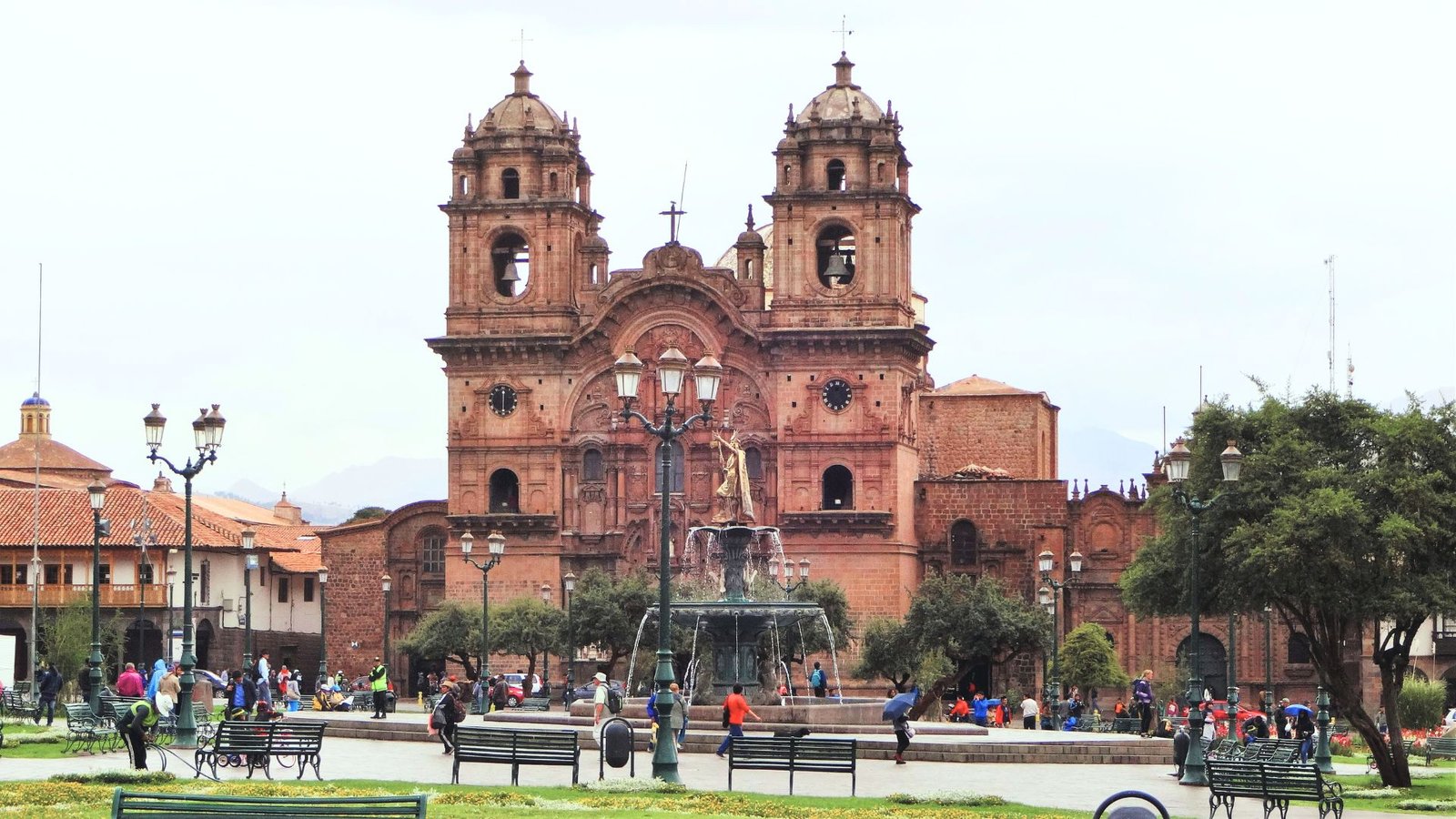 Cusco Cathedral, a stunning colonial masterpiece, dominates the Plaza de Armas with its intricate baroque facade and rich history. Inside, it holds priceless art and Inca relics. Photo by Roving Wanders on Unsplash
Cusco Cathedral, a stunning colonial masterpiece, dominates the Plaza de Armas with its intricate baroque facade and rich history. Inside, it holds priceless art and Inca relics. Photo by Roving Wanders on Unsplash
Insights into Local Customs and Traditions
Cusco’s culture is deeply rooted in its Inca heritage, with indigenous traditions still thriving alongside Spanish influences. Quechua, the language of the Incas, is widely spoken alongside Spanish. Learning a few Quechua phrases, such as “Allin p’unchay” (Good day) or “Sulpayki” (Thank you), can enrich your interactions with locals.
Festivals play a significant role in what makes Cusco unique, highlighting its rich history and traditions. One of the most thrilling celebrations is Inti Raymi, the Festival of the Sun, which takes place every June 24th. During this festival, the city comes alive with vibrant parades, traditional music, and performances that reenact ancient Inca rituals.
Another key event is Corpus Christi, celebrated 60 days after Easter Sunday, typically in late May or early June. This Catholic festival features processions where beautifully adorned statues of saints are paraded through the streets. People also indulge in traditional dishes like chiriuchu and celebrate with music and dancing.
What sets these festivals apart is their blend of indigenous and Spanish traditions, reflecting the city’s profound cultural heritage. Visiting Cusco during these festivities feels like stepping into a living, breathing history book!
When visiting Cusco and Machu Picchu, respect for local customs is key. Always ask for permission before taking photos of people, especially in rural areas. Dress modestly when entering churches or sacred sites, and be mindful of the spiritual significance of Inca ruins.
Planning Your Trip
Best Times to Visit Considering Weather and Festivals
The best time to visit Cusco and Machu Picchu is during the dry season, from May to October. During these months, the weather is sunny and mild, making it ideal for hiking and exploring. However, this is also peak tourist season, so expect larger crowds and higher prices.
The wet season, from November to April, brings daily rain showers, but the landscape is lush and green, and there are fewer tourists. If you don’t mind the rain, this can be a great time to visit.
Key festivals to plan around include Inti Raymi in June, Corpus Christi, which takes place 60 days after Easter (typically late May or early June) and Cusco’s Independence Day in July, which features parades, fireworks, and cultural events.
Visa Requirements and Travel Documentation
Most travelers, including those from the United States, Canada, and the European Union, do not need a visa to visit Peru for up to 90 days. A valid passport with at least six months of validity is required. Proof of onward travel may be requested upon entry.
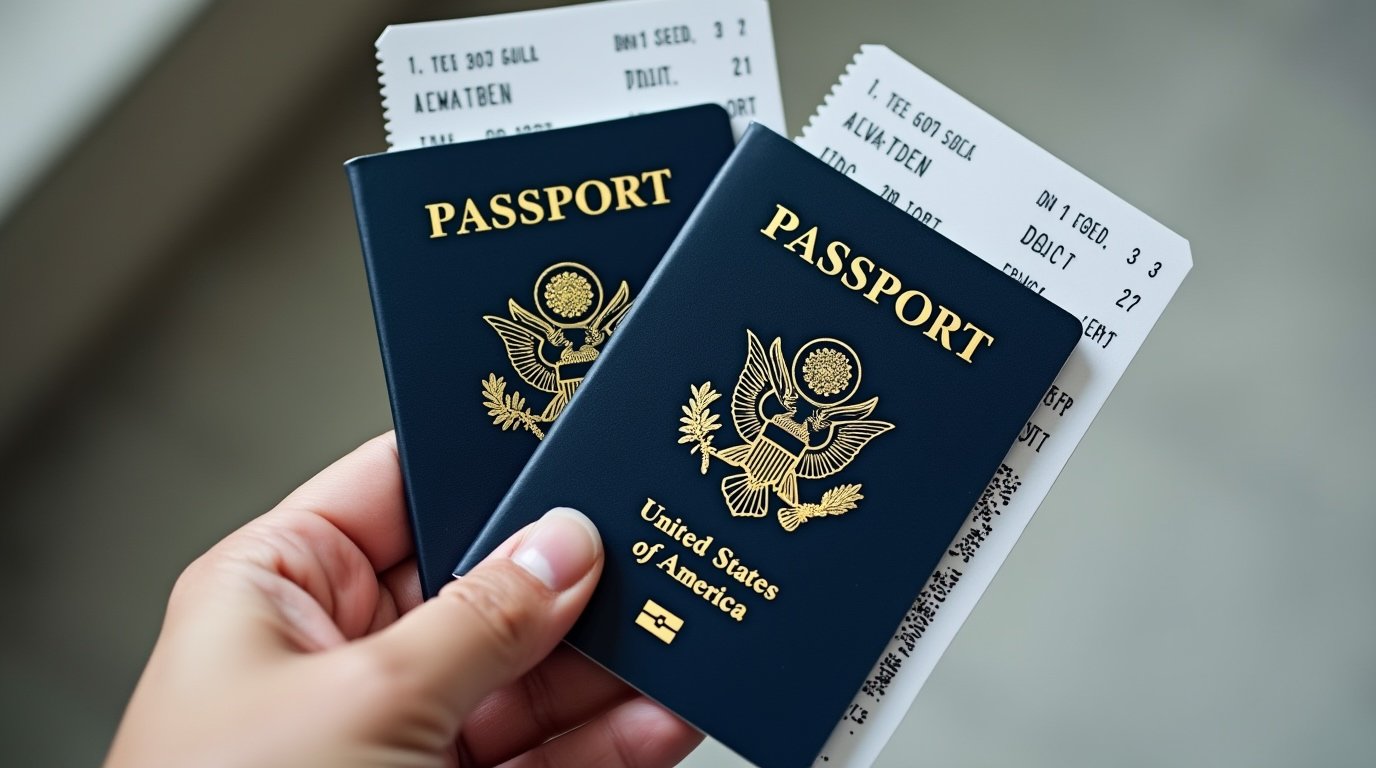
Health and Safety Precautions
Altitude Sickness: Cusco’s high elevation can cause altitude sickness. Spend a day or two acclimatizing, drink plenty of water, and avoid heavy meals and alcohol.
- Health: Ensure routine vaccinations are up to date. Consider vaccines for hepatitis A and typhoid. Drink bottled water and avoid raw or undercooked food.
- Safety: Petty crime like pickpocketing can occur in crowded areas. Keep valuables secure and avoid walking alone at night.
Top Destinations
Cusco:
Cusco is a treasure trove of history and culture. Explore the Plaza de Armas, the city’s main square, surrounded by colonial buildings and the stunning Cusco Cathedral. Visit Qorikancha, the Inca Temple of the Sun, and the nearby Sacsayhuamán fortress, known for its massive stone walls.
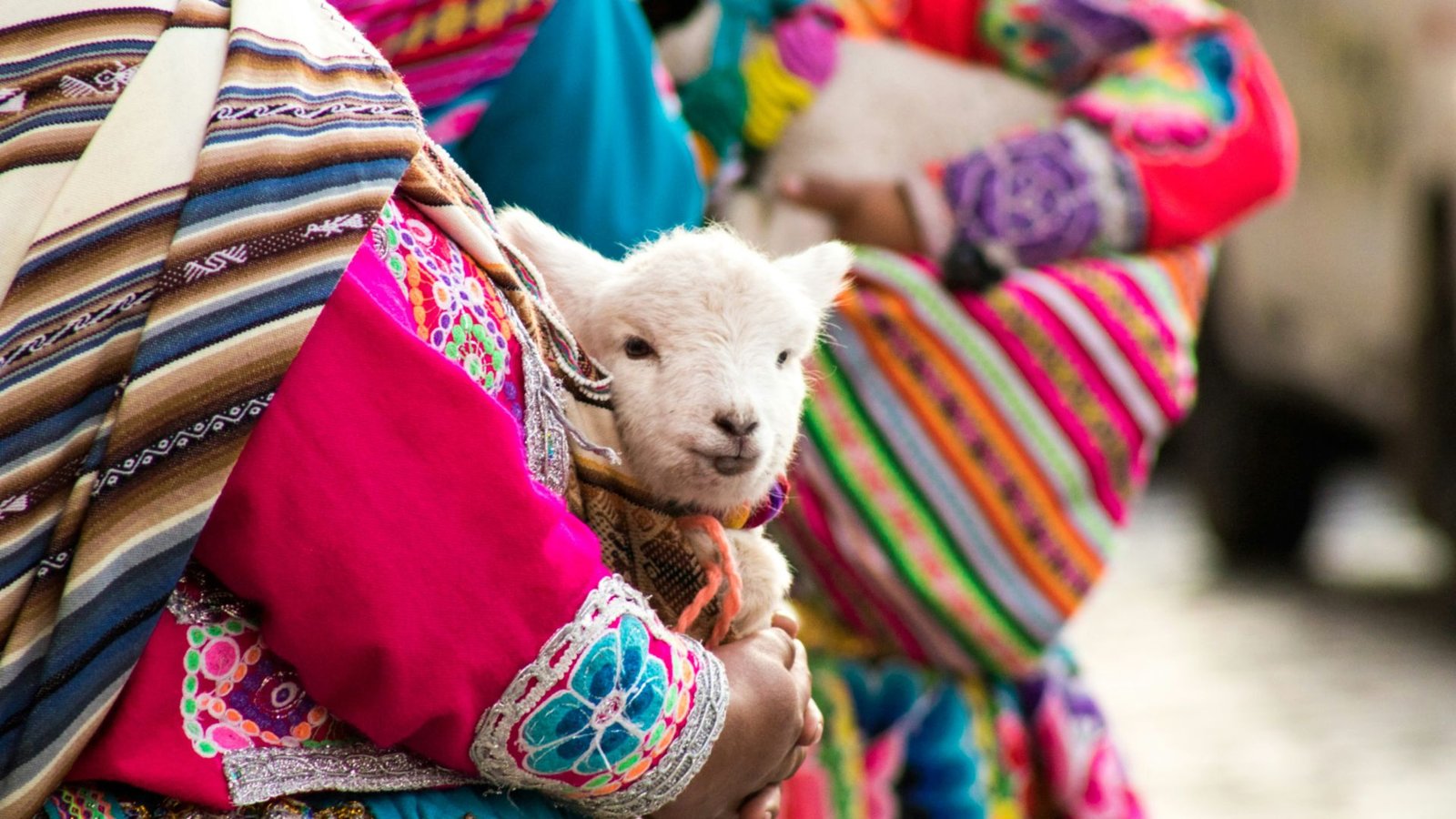 A woman in traditional Andean attire carries a baby sheep in Cusco, Peru, showcasing the region’s rich culture and heritage.Photo by Renny Gamarra on Unsplash
A woman in traditional Andean attire carries a baby sheep in Cusco, Peru, showcasing the region’s rich culture and heritage.Photo by Renny Gamarra on Unsplash
Machu Picchu:
No trip to Peru is complete without visiting Machu Picchu. Whether you hike the Inca Trail or take a train from Cusco, the journey is as memorable as the destination. Explore the Temple of the Sun, the Intihuatana stone, and the terraced fields while soaking in the breathtaking views.
 Machu Picchu, the breathtaking Incan citadel, stands majestically among the Andes, showcasing ancient ruins and stunning panoramic views. Photo by Eddie Kiszka on Unsplash
Machu Picchu, the breathtaking Incan citadel, stands majestically among the Andes, showcasing ancient ruins and stunning panoramic views. Photo by Eddie Kiszka on Unsplash
Sacred Valley:
The Sacred Valley, stretching between Cusco and Machu Picchu, is home to charming towns like Pisac and Ollantaytambo. Visit Pisac’s vibrant market and Inca ruins, or explore Ollantaytambo’s fortress and cobblestone streets.
 Pisac’s Inca ruins offer breathtaking terraces and temples with stunning views of the Sacred Valley. Photo by Meg von Haartman on Unsplash
Pisac’s Inca ruins offer breathtaking terraces and temples with stunning views of the Sacred Valley. Photo by Meg von Haartman on Unsplash
Rainbow Mountain
For adventurous travelers, Rainbow Mountain offers a challenging hike with stunning views of its colorful mineral-rich slopes.
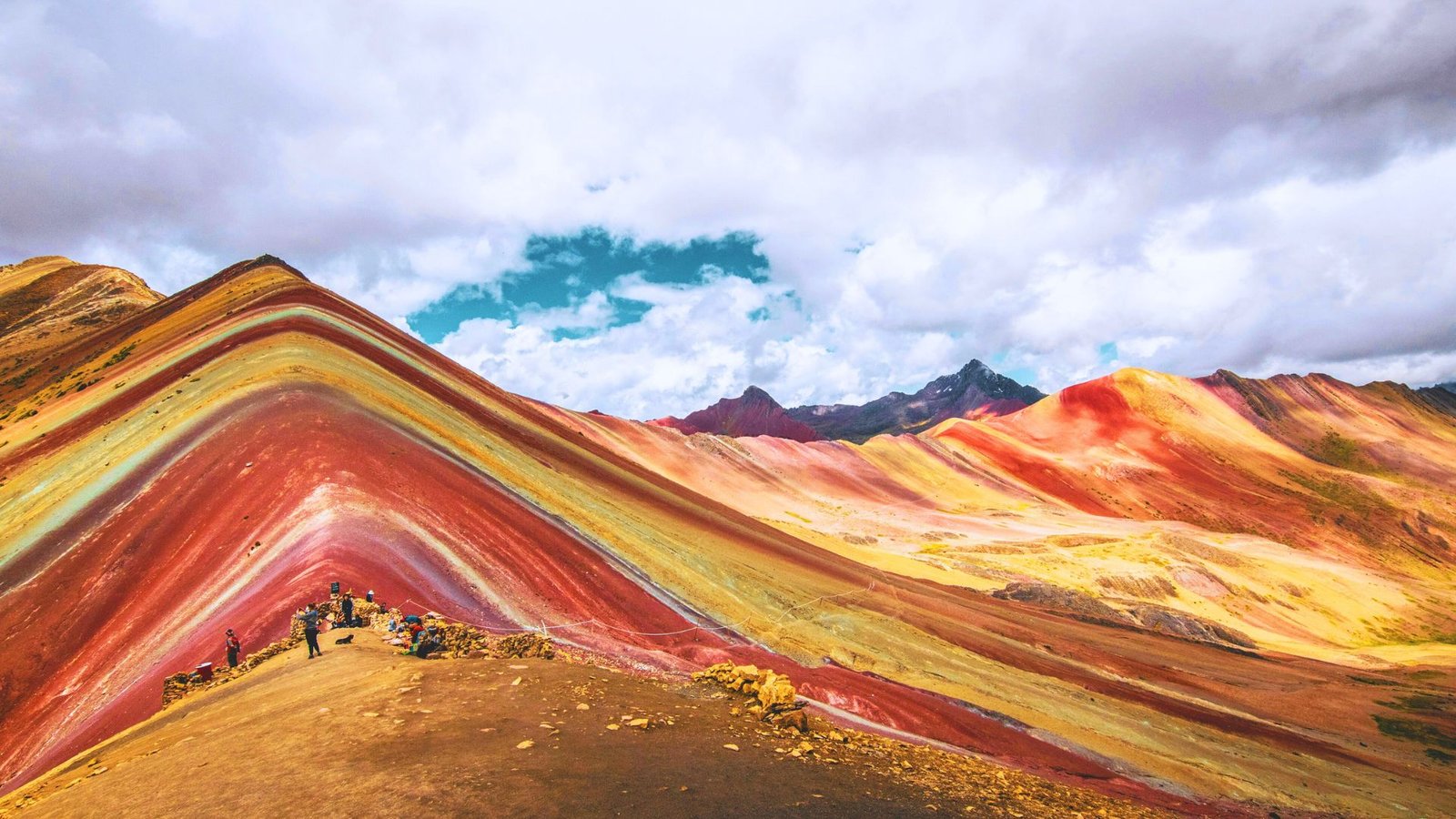 Rainbow Mountain, Cusco, stuns with its vibrant, multicolored peaks, a breathtaking natural wonder high in the Andes. Photo by McKayla Crump on Unsplash
Rainbow Mountain, Cusco, stuns with its vibrant, multicolored peaks, a breathtaking natural wonder high in the Andes. Photo by McKayla Crump on Unsplash
Suggested Itineraries
3-Day Itinerary: Cusco and Machu Picchu
Day 1: Explore Cusco’s historic center and nearby ruins.
Day 2: Take a train to Machu Picchu and spend the day exploring.
Day 3: Visit the Sacred Valley before returning to Cusco.
7-Day Itinerary: Cusco, Sacred Valley, and Machu Picchu
Day 1-2: Discover Cusco.
Day 3-4: Explore the Sacred Valley.
Day 5-6: Visit Machu Picchu.
Day 7: Return to Cusco for departure.
14-Day Itinerary: Comprehensive Peru Adventure
Day 1-3: Lima.
Day 4-7: Cusco and Sacred Valley.
Day 8-10: Machu Picchu and Inca Trail.
Day 11-12: Rainbow Mountain.
Day 13-14: Return to Lima. (SECURE YOUR FLIGHT – BEST DEALS HERE!).
Accomodation Guide
Hotels in Cusco
Budget-Friendly
- Pariwana Hostel Cusco: A lively hostel with a central location, offering dormitory and private rooms. Prices start at $15 per night.
- Milhouse Hostel Cusco: Known for its social atmosphere and free walking tours. Prices start at $12 per night.
Mid-Range
- Hotel Rumi Punku: A charming hotel with Inca-inspired architecture, offering comfortable rooms and a rooftop terrace. Prices start at $70 per night.
- Casa Andina Standard Cusco Plaza: Located near the Plaza de Armas, this hotel features colonial-style decor and a cozy courtyard. Prices start at $90 per night.
Luxury
- Belmond Hotel Monasterio: A historic monastery turned luxury hotel, offering elegant rooms and fine dining. Prices start at $400 per night.
- Palacio del Inka, a Luxury Collection Hotel: A five-star hotel with a spa, courtyard, and stunning views of the city. Prices start at $350 per night. (SECURE THE BEST HOTEL DEALS HERE!).
Hotels in Aguas Calientes (Machu Picchu Pueblo)
Budget-Friendly
- Hospedaje Turístico Recoleta: Affordable and close to the train station, offering basic amenities. Prices start at $25 per night.
- Hostal Machupicchu: A simple hostel with clean rooms and friendly service. Prices start at $30 per night.
Mid-Range
- El Mapi by Inkaterra: A modern, eco-friendly hotel with comfortable rooms and a restaurant. Prices start at $150 per night.
- Casa del Sol Machupicchu: A boutique hotel with spacious rooms and a hot tub. Prices start at $120 per night.
Luxury
- Inkaterra Machu Picchu Pueblo Hotel: A luxurious retreat surrounded by nature, offering private villas and a spa. Prices start at $500 per night.
- Sumaq Machu Picchu Hotel: A five-star hotel with gourmet dining and panoramic views of the Urubamba River. Prices start at $450 per night. (SECURE THE BEST HOTEL DEALS HERE!).
Transportation
How to Get to Machu Picchu from Cusco
By Train
The most popular way to reach Machu Picchu is by train from Cusco to Aguas Calientes (Machu Picchu Pueblo). Two companies operate this route Peru Rail and Inca Rail:
- Peru Rail: Offers three service levels:
- Expedition: Budget-friendly with comfortable seating. Prices start at $70 one way.
- Vistadome: Panoramic windows and snacks included. Prices start at $100 one way.
- Hiram Bingham: Luxury service with gourmet meals and live entertainment. Prices start at $500 one way.
 The Peru Rail train in Cusco offers a luxurious journey through the breathtaking Andes, blending comfort with stunning scenic views.
The Peru Rail train in Cusco offers a luxurious journey through the breathtaking Andes, blending comfort with stunning scenic views.
- Inca Rail: Offers four service levels:
- The Voyager: Basic service with comfortable seating. Prices start at $60 one way.
- The 360°: Panoramic windows and onboard entertainment. Prices start at $90 one way.
- The First Class: Premium service with gourmet meals. Prices start at $200 one way.
- The Private: Exclusive service for small groups. Prices start at $400 one way.
 A woman stands on the balcony of an Inca Rail train, enjoying the breathtaking green landscapes of the Andes mountains as the journey heads toward the famous Machu Picchu.
A woman stands on the balcony of an Inca Rail train, enjoying the breathtaking green landscapes of the Andes mountains as the journey heads toward the famous Machu Picchu.
By Bus
From Aguas Calientes, take a 25-minute bus ride to Machu Picchu. Buses run every 15 minutes from 5:30 AM to 3:30 PM. Round-trip tickets cost $24.
By Foot (Inka Trail)
For adventurous travelers, the Inca Trail is a multi-day hike that ends at Machu Picchu. Permits are required and should be booked months in advance.
Culinary Delights
Peruvian cuisine is a highlight of any trip. Here are some must-try dishes and where to find them:
- Ceviche: Fresh raw fish marinated in lime juice, served with onions and corn. Try it at Chicha in Cusco.
 Ceviche in Cusco blends fresh trout with zesty lime, Andean spices, and crispy corn for a unique Peruvian twist on the classic dish.
Ceviche in Cusco blends fresh trout with zesty lime, Andean spices, and crispy corn for a unique Peruvian twist on the classic dish.
- Lomo Saltado: Stir-fried beef with onions, tomatoes, and fries, served with rice. A staple at Pachapapa in Cusco.
- Rocoto Relleno: Spicy peppers stuffed with meat and cheese, baked with eggs and milk. Best enjoyed at Cicciolina in Cusco.
- Cuy (Guinea Pig): A traditional Andean dish, often roasted or fried. Try it at Kusikuy in Cusco.
- Chicha Morada: A refreshing drink made from purple corn, pineapple, and spices. Available at most local restaurants.
For a unique dining experience, visit San Pedro Market in Cusco, where you can sample local dishes and buy fresh produce.
Cultural Experiences
Places to Visit
- Pisac Market: A vibrant market in the Sacred Valley, known for its handicrafts and textiles.
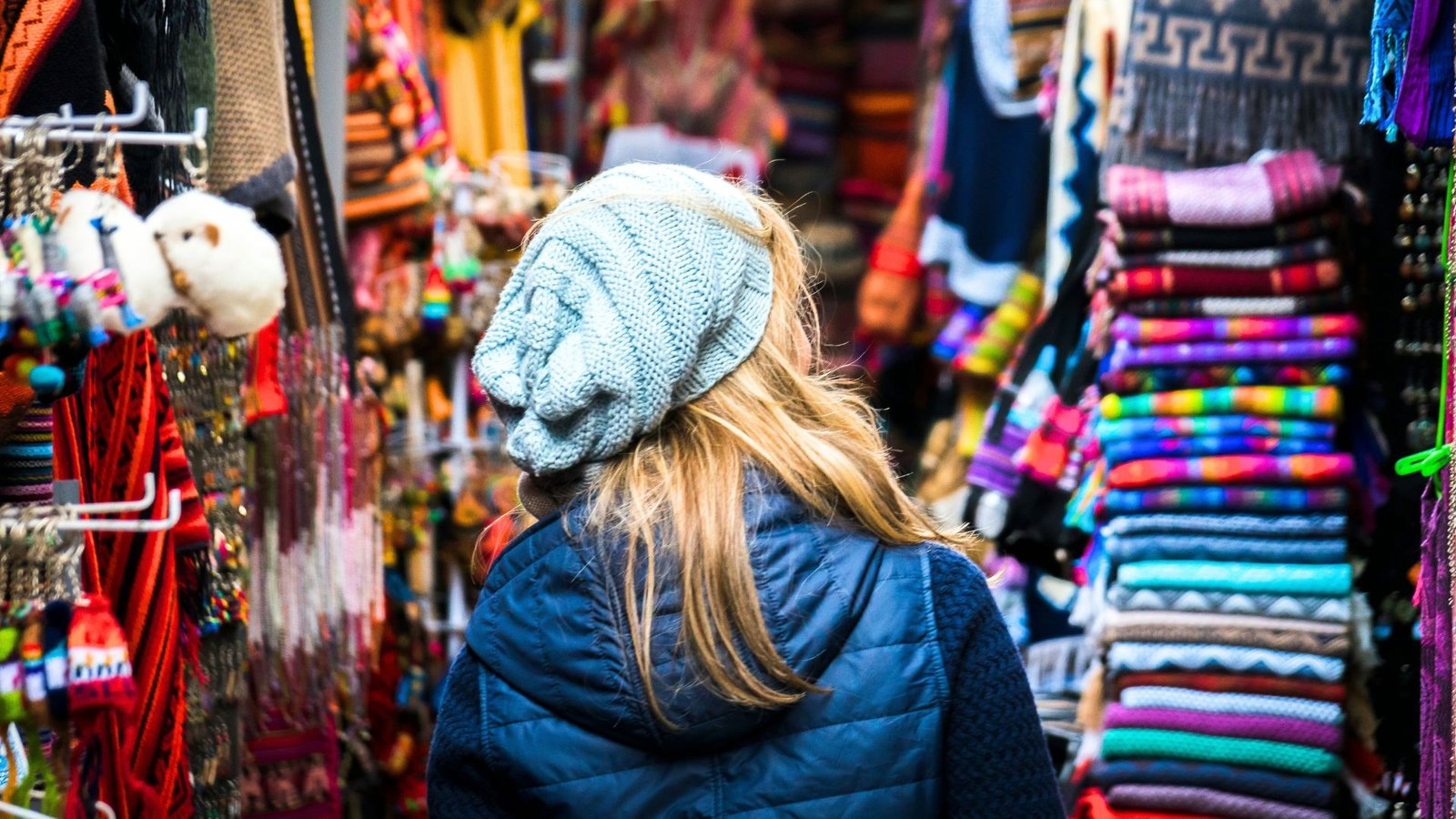 Pisac Market bursts with color and culture, offering handcrafted goods, vibrant textiles, and local flavors in the heart of the Sacred Valley. Photo by Willian Justen de Vasconcellos on Unsplash
Pisac Market bursts with color and culture, offering handcrafted goods, vibrant textiles, and local flavors in the heart of the Sacred Valley. Photo by Willian Justen de Vasconcellos on Unsplash
- Ollantaytambo: A charming town with well-preserved Inca ruins and cobblestone streets.
- Chinchero: A traditional village famous for its weaving demonstrations and Sunday market.
Festivals and Events
- Inti Raymi: Celebrated every June in Cusco, this festival honors the Inca sun god with parades and reenactments.
- Corpus Christi: A Catholic festival featuring processions of saints’ statues through the streets of Cusco.
Outdoor Activities
Hiking
- Inca Trail: A 4-day trek to Machu Picchu, offering stunning views and ancient ruins. Permits are required and cost around $600.
- Rainbow Mountain (Vinicunca): A challenging day hike with breathtaking views of colorful mineral deposits. Tours start at $50.
 A breathtaking day hike to Rainbow Mountain rewards adventurers with stunning, multicolored landscapes high in the Peruvian Andes. Photo by Alvaro Palacios on Unsplash
A breathtaking day hike to Rainbow Mountain rewards adventurers with stunning, multicolored landscapes high in the Peruvian Andes. Photo by Alvaro Palacios on Unsplash
Adventure Sports
- White-Water Rafting: The Urubamba River offers thrilling rapids for all skill levels. Tours start at $60.
- Zip-Lining: Soar above the Sacred Valley with zip-line tours starting at $40.
Nature Exploration
- Maras Salt Mines: Explore the ancient salt pans and learn about traditional salt harvesting. Entry costs $10.
 The Maras Salt Mines in Cusco create a breathtaking mosaic of terraced salt pools, harvested by hand since Inca times.Photo by Jeff Anders on Unsplash
The Maras Salt Mines in Cusco create a breathtaking mosaic of terraced salt pools, harvested by hand since Inca times.Photo by Jeff Anders on Unsplash
- Moray Terraces: Visit these circular Inca agricultural terraces, believed to be an ancient laboratory.
Practical Information and Safety Tips
Cusco is generally a safe destination for tourists, but like any popular travel spot, it’s important to stay aware of your surroundings.
Petty crimes: like pickpocketing can occur in crowded areas, so keep your valuables secure and avoid displaying expensive items.
Be safe: Stick to well-lit, busy streets at night, and consider using registered taxis or ride-sharing apps like Uber for transportation.
Altitude sickness: is a common concern in Cusco due to its high elevation. Symptoms can include headaches, dizziness, nausea, and shortness of breath. To minimize the effects, take it easy for the first day or two, drink plenty of water, and avoid alcohol and heavy meals. Coca tea, a traditional remedy, can help alleviate symptoms. If you feel unwell, rest and consider over-the-counter medications like ibuprofen or acetazolamide.
In severe cases, seek medical attention—many hotels have oxygen available, and clinics in Cusco are experienced in treating altitude-related issues.
For emergencies, the U.S. Embassy in Lima can be reached at +51-1-618-2000, and their website (https://pe.usembassy.gov) provides additional resources.
Local emergency numbers: include 105 for police and 116 for medical assistance.
Travel Insurance: It’s also a good idea to have travel insurance that covers medical emergencies and evacuation, especially if you plan to hike or engage in adventure activities.
Currency: The Peruvian Sol (PEN). ATMs are widely available in Cusco.
Tipping: 10% in restaurants; small amounts for guides and hotel staff.
Language: Spanish and Quechua. English is spoken in tourist areas.
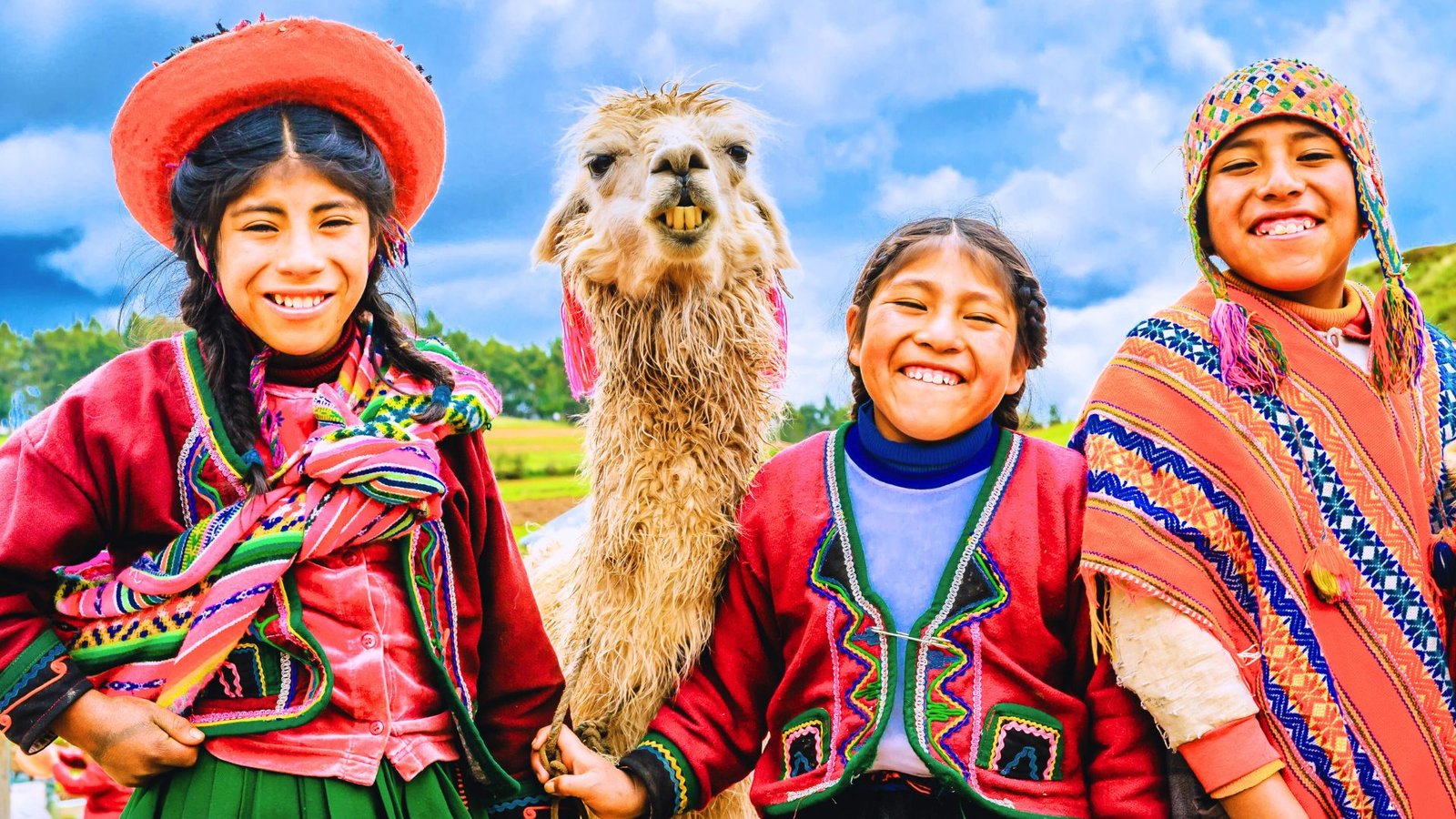 Three joyful children in vibrant traditional attire pose with a friendly llama in the heart of Cusco, showcasing Peru’s colorful culture.Photo by Alexander Schimmeck on Unsplash
Three joyful children in vibrant traditional attire pose with a friendly llama in the heart of Cusco, showcasing Peru’s colorful culture.Photo by Alexander Schimmeck on Unsplash
Final Thoughts
Cusco and Machu Picchu are destinations that truly capture the imagination. From the awe-inspiring ruins of Machu Picchu to the vibrant culture and history of Cusco, this region offers an unforgettable journey through time and nature.
Whether you’re exploring ancient Inca sites, hiking through the Andes, or savoring the flavors of Peruvian cuisine, every moment here is filled with wonder.
This guide provides everything you need to plan your trip, from practical tips on transportation and safety to recommendations for accommodations and activities.
By respecting local customs, staying mindful of altitude, and embracing the spirit of adventure, you’ll create memories that will last a lifetime.
So pack your bags, lace up your hiking boots, and get ready to explore the heart of the Inca Empire. Your adventure awaits!
